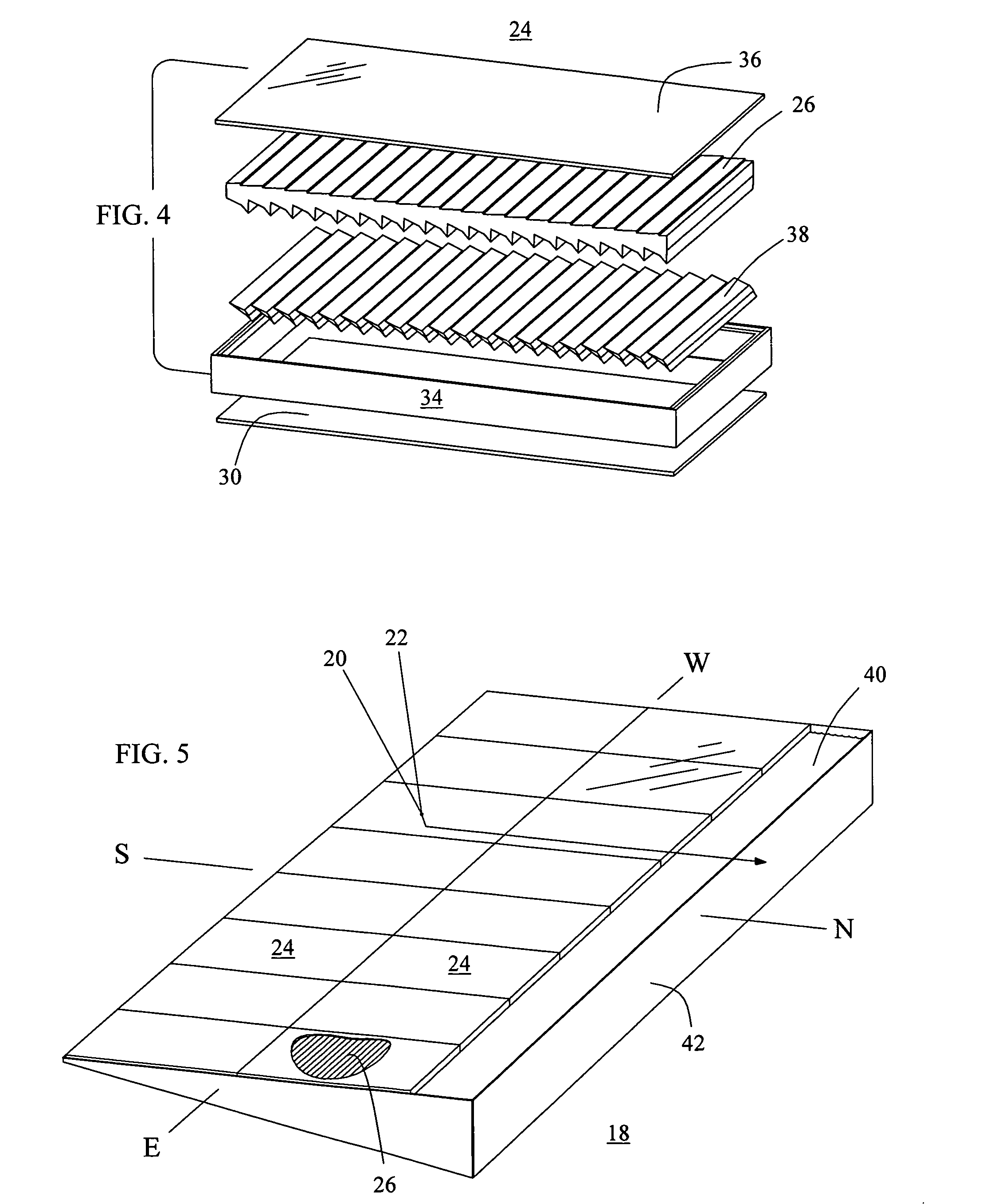Collection optic for solar concentrating wedge
- Summary
- Abstract
- Description
- Claims
- Application Information
AI Technical Summary
Benefits of technology
Problems solved by technology
Method used
Image
Examples
Embodiment Construction
[0017]In FIG. 1, a prior art water-filled wedge 2 is shown collecting sunlight. Rays 4 and 6 outline the angular field of view of the nontracking solar concentrator. Ray 6 is the maximum elevation ray that the wedge can collect. After entering water 8 and reflecting from the bottom, ray 6 approaches water surface 10 at greater than the critical angle and is totally internally reflected 12 back into the water toward the focus. Whereas, if high ray 14 enters the water, it will reflect and exit the water as lost energy 16. Only the light between rays 4 and6 can be collected.
[0018]A major problem for the prior art wedge is that before arriving at the collector the low-angled light passes through an extra thick air mass which absorbs much of the radiant energy.
[0019]The horizontal wedge also suffers a cosine loss. The light approaches water surface 10 at an oblique angle, causing a further decrease in the energy density of the light. For example, 60° incident light has an energy density ...
PUM
 Login to View More
Login to View More Abstract
Description
Claims
Application Information
 Login to View More
Login to View More - R&D
- Intellectual Property
- Life Sciences
- Materials
- Tech Scout
- Unparalleled Data Quality
- Higher Quality Content
- 60% Fewer Hallucinations
Browse by: Latest US Patents, China's latest patents, Technical Efficacy Thesaurus, Application Domain, Technology Topic, Popular Technical Reports.
© 2025 PatSnap. All rights reserved.Legal|Privacy policy|Modern Slavery Act Transparency Statement|Sitemap|About US| Contact US: help@patsnap.com



